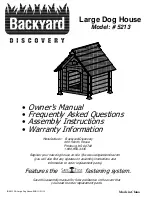
172-65160MA-04 (J5B/JF5B) 4 Oct 2021
5
Operation
Principles of air and condensate discharge:
1. Start-up Air and Cold Condensate Discharge
At start-up, before steam is supplied the system is
cold and the bimetal plate is flexed downward,
keeping the air vent valve (A) open. This allows for
the rapid discharge of air through the vent (A) and
cold condensate through the orifice (B) when steam
is first supplied to the system.
2. Condensate Discharge
After the discharge of initial air and cold
condensate, the heat of the inflowing steam and
condensate cause the bimetal plate to flex upward,
closing the air vent valve (A). The rising
condensate level causes the float to rise due to
buoyancy, opening the orifice (B) and allowing
condensate to be discharged. The flexed bimetal
plate keeps the vent closed and will not open again
during normal operation.
3. Discharge of Large Quantities of Condensate
Increases in the condensate inflow rate cause the
condensate level in the trap to rise. The float
consequently rises and enlarges the opening of the
orifice (B), allowing more condensate to be
discharged. In this manner, continuous condensate
discharge occurs while the opening size of the
orifice varies depending on the condensate flow
rate.
4. Closed Position
When the condensate flow rate decreases, the float
falls, closing off the orifice (B) opening. A water
seal is maintained at all times over the orifice (B) to
prevent steam loss. On equipment where steam-
locking or air-binding tends to occur, system
integrity can be maintained by operating the
properly adjusted lock release valve.
Flash
Steam
Air
Steam
Condensate
Lock Release
Valve



































